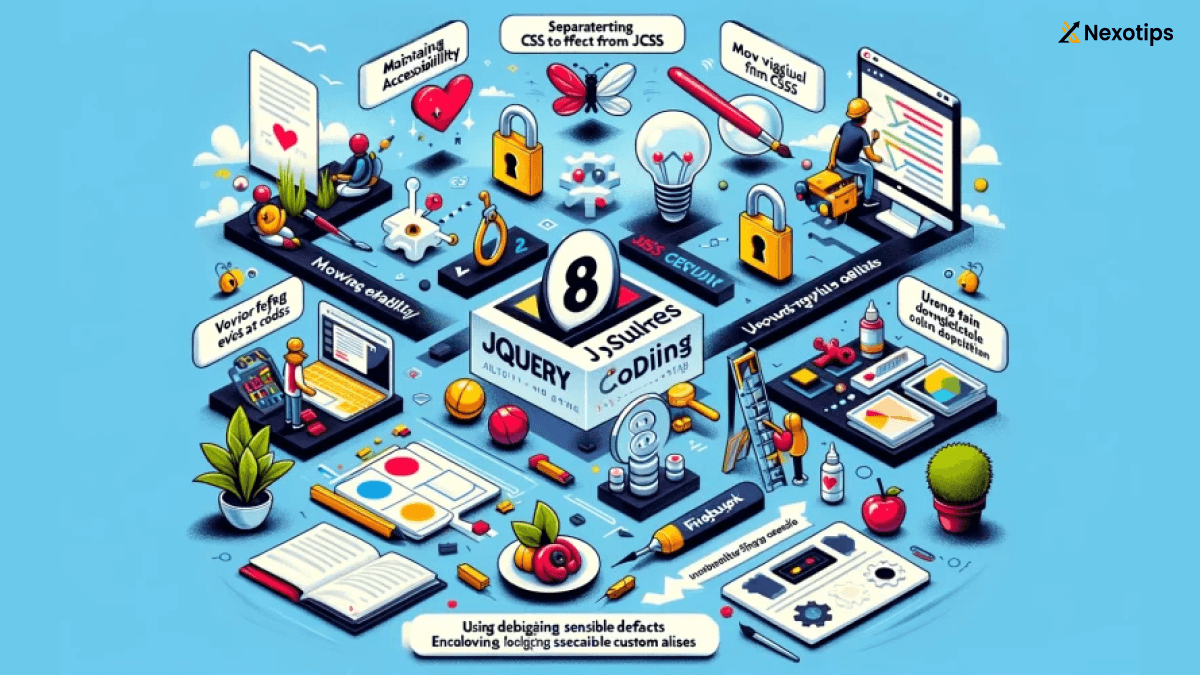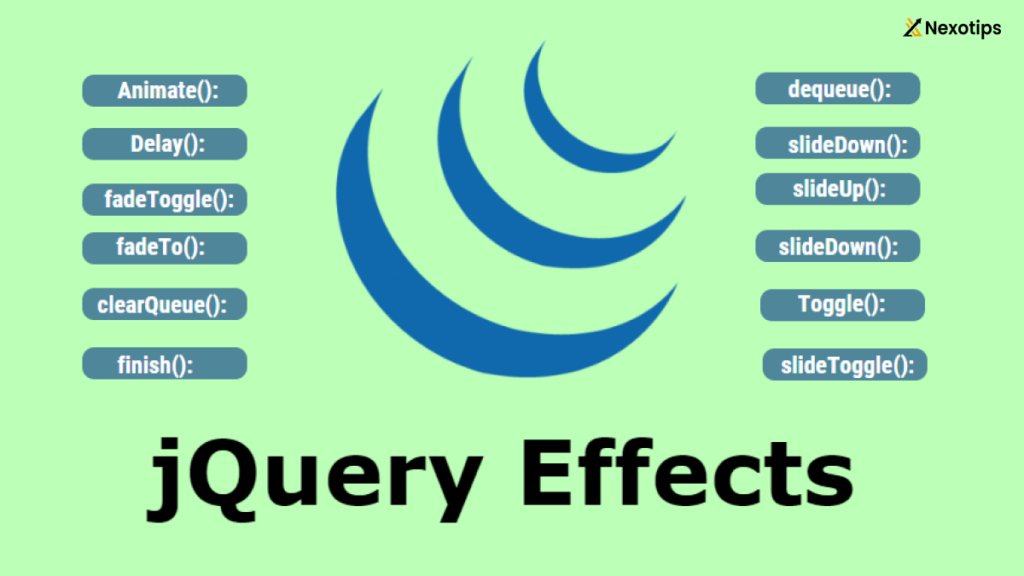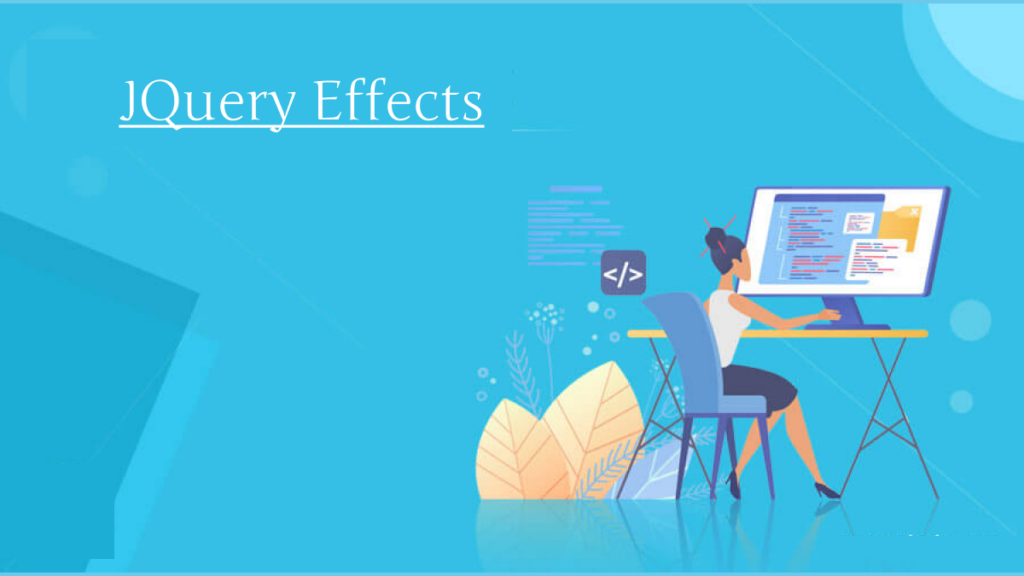
jQuery Effects Every Developer Should Know for Maximum Impact in 2024
Contents :
Overview of jQuery Effects
In the dynamic world of web development the jQuery Effects is more usable thing, user experience is a crucial factor that determines the success of a website. One effective way to enhance user interaction and make web pages more engaging is through the use of jQuery effects. jQuery, a powerful and lightweight JavaScript library, simplifies various tasks such as HTML document traversal, event handling, and animation. This comprehensive blog will delve into the world of jQuery effects, providing detailed insights and practical examples on how to use them effectively to create visually appealing and interactive web applications.
What Are jQuery Effects?
jQuery effects are predefined methods that enable developers to create animations and transitions for HTML elements. These effects can range from simple show and hide functionalities to more complex animations like fading, sliding, and custom animations. By incorporating jQuery effects, developers can make web pages more dynamic, improving user engagement and overall experience.
Benefits of Using jQuery Effects
Utilizing it in web development offers several benefits:
- Ease of Use: jQuery simplifies the process of adding animations with concise and readable code.
- Cross-Browser Compatibility: jQuery handles the inconsistencies between different browsers, ensuring that animations perform consistently across platforms.
- Enhanced User Experience: Smooth animations and transitions make interactions feel more natural and intuitive.
- Performance Optimization: jQuery is optimized for performance, ensuring that animations run smoothly without causing significant load on the browser.
Basic jQuery Effects
There are several fundamental jQuery effects that developers commonly use to enhance web pages.
Show and Hide
The show() and hide() methods are used to display or hide elements respectively. These methods can take an optional speed parameter, which defines the duration of the effect.
javascriptCopy code// Show an element
$("element").show("slow");
// Hide an element
$("element").hide("fast");
Fade In and Fade Out
The fadeIn() and fadeOut() methods gradually change the opacity of an element, making it appear or disappear smoothly.
javascriptCopy code// Fade in an element
$("element").fadeIn("slow");
// Fade out an element
$("element").fadeOut("fast");
Slide Up and Slide Down
The slideUp() and slideDown() methods create a sliding effect, hiding or showing elements vertically.
javascriptCopy code// Slide up an element
$("element").slideUp("slow");
// Slide down an element
$("element").slideDown("fast");
Toggle
The toggle() method switches between the show() and hide() states. It makes an element visible if it is hidden and hides it if it is visible.
javascriptCopy code// Toggle visibility of an element
$("element").toggle("slow");

Advanced jQuery Effects
Beyond the basic effects, jQuery also offers advanced animations that can be customized to create unique interactions.
Animate
The animate() method allows developers to create custom animations by changing the CSS properties of an element over a specified duration.
javascriptCopy code// Animate an element
$("element").animate({
left: '250px',
opacity: '0.5'
}, "slow");
Chaining Effects
Chaining allows multiple jQuery methods to be run on the same element within a single statement, creating a sequence of animations.
javascriptCopy code// Chain multiple effects
$("element").slideUp("slow").fadeIn("fast").animate({left: '250px'});
Callback Functions
Callback functions execute code after an effect has completed, useful for sequencing animations.
javascriptCopy code// Using a callback function
$("element").fadeOut("slow", function() {
alert("Fade out completed!");
});
Easing
Easing functions determine the rate of progress for an animation at various stages throughout the animation. jQuery UI provides additional easing options.
javascriptCopy code// Using an easing function
$("element").animate({left: '250px'}, "slow", "easeOutBounce");
Practical Applications of jQuery Effects
They can be applied in various practical scenarios to enhance the user experience on websites.
Form Validation Feedback
Using it in form validation can improve user experience. For example, the slideDown() method can display error messages when a user submits a form with invalid inputs.
javascriptCopy code$("form").submit(function(event) {
if (!isValid) {
$("#error-message").slideDown("fast");
event.preventDefault();
}
});
Image Galleries
jQuery effects are ideal for creating smooth transitions in image galleries. The fadeIn() and fadeOut() methods can switch images seamlessly.
javascriptCopy code$("#next").click(function() {
$("#current-image").fadeOut("fast", function() {
// Load the next image
$(this).attr("src", nextImage).fadeIn("fast");
});
});
Interactive Menus
Interactive navigation menus can be created using jQuery effects like slideToggle() to show or hide submenu items.
javascriptCopy code$(".menu-item").click(function() {
$(this).children(".submenu").slideToggle("fast");
});
Modal Windows
Creating modal windows with jQuery effects can enhance user interaction. For instance, you can use the fadeIn() method to display a modal and fadeOut() to close it.
javascriptCopy code// Open modal
$("#openModal").click(function() {
$(".modal").fadeIn("fast");
});
// Close modal
$("#closeModal").click(function() {
$(".modal").fadeOut("fast");
});
Tips for Using jQuery Effects
To make the most out of jQuery effects, consider the following tips:
- Keep Animations Subtle: Overusing animations can overwhelm users. Use them sparingly to enhance, not distract.
- Optimize Performance: Ensure animations run smoothly by keeping DOM manipulations minimal and using hardware-accelerated CSS properties.
- Test Across Browsers: Always test your animations on multiple browsers and devices to ensure consistent performance.
- Combine Effects: Combine different effects to create more complex and engaging animations.
- Use Easing Functions: Easing functions can make animations appear more natural and fluid.

Common Pitfalls and How to Avoid Them
While jQuery effects can greatly enhance a website, there are common pitfalls that developers should be aware of:
Overusing Effects
Too many animations can slow down a website and overwhelm users. Stick to essential animations that improve user experience.
Ignoring Performance
Heavy use of animations can impact performance, especially on lower-end devices. Optimize animations and test on various devices to ensure smooth performance.
Lack of Testing
Animations might not work consistently across all browsers. Always test animations on multiple browsers and devices to ensure compatibility.
Ignoring Accessibility
Animations can affect accessibility. Ensure that animations do not interfere with screen readers and other assistive technologies.
Conclusion
jQuery effects offer a powerful way to enhance the interactivity and user experience of web projects. From basic show and hide functionalities to advanced custom animations, jQuery provides a wide range of tools to make websites more dynamic and engaging. By mastering these effects and applying them thoughtfully, developers can significantly improve the aesthetics and usability of their web applications.
Read More : Exploring JS Web APIs 2024 : Enhancing Web Development With Powerful Interfaces
